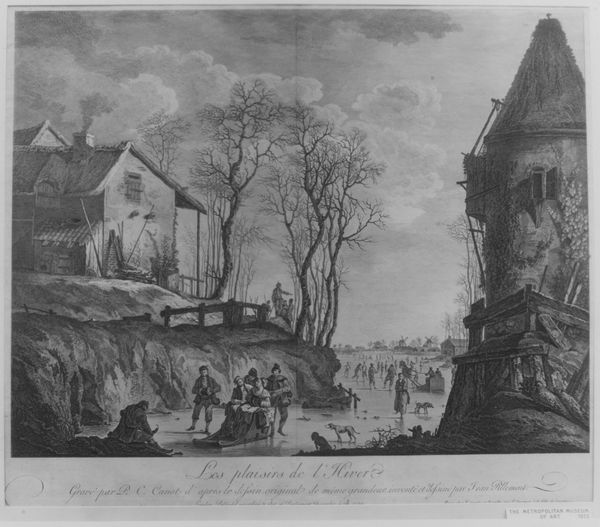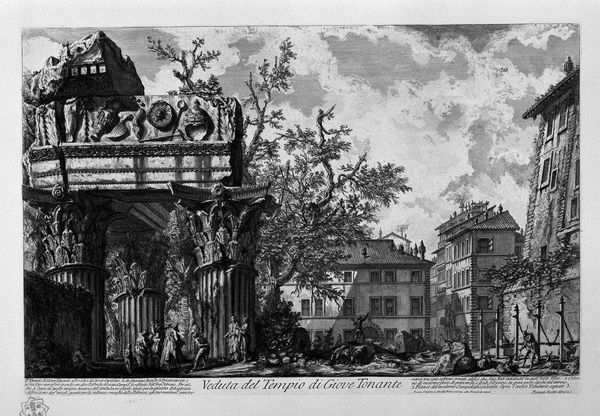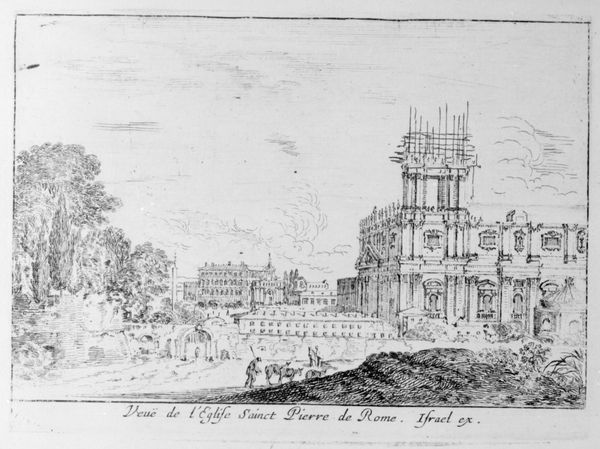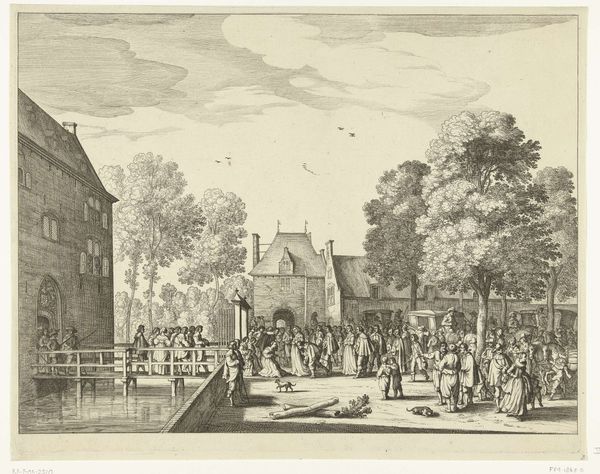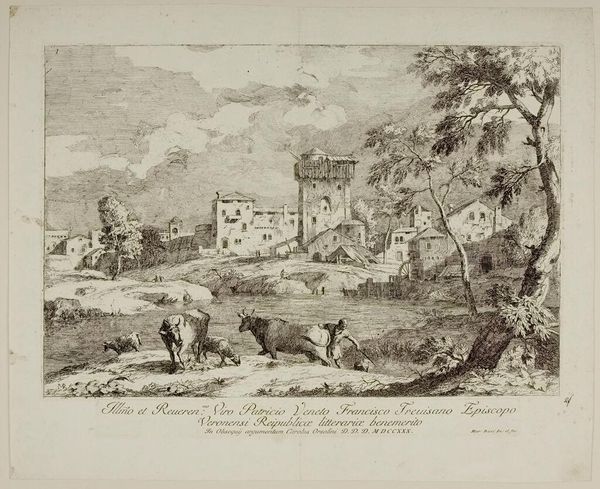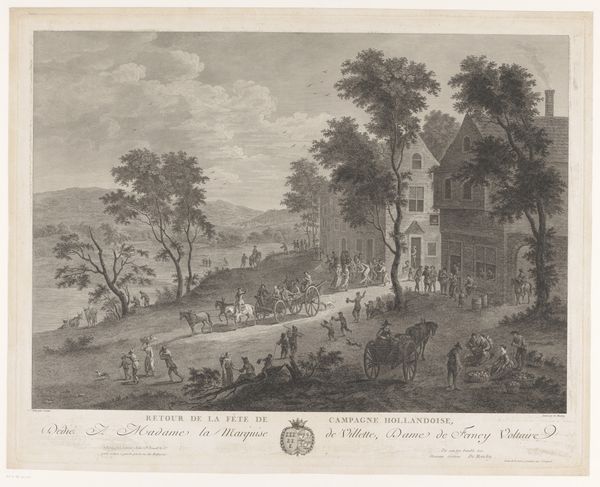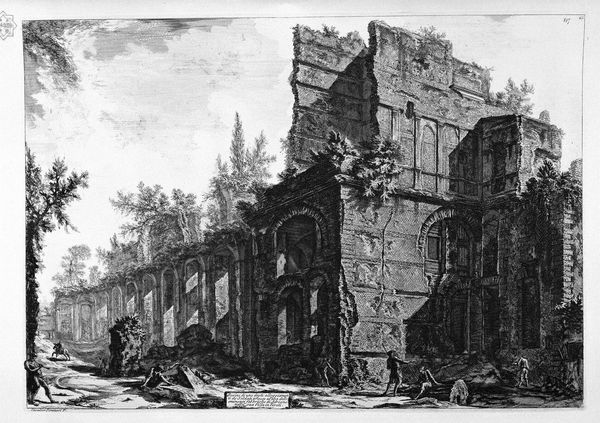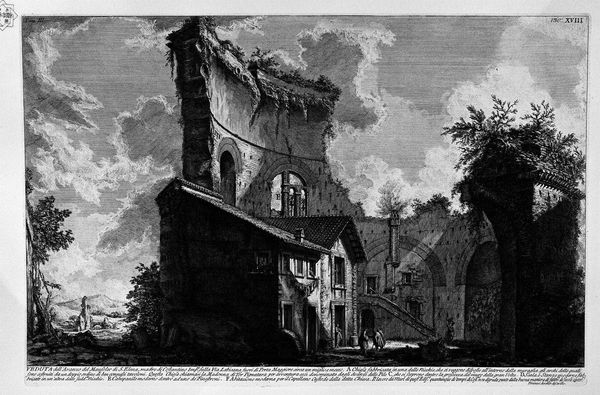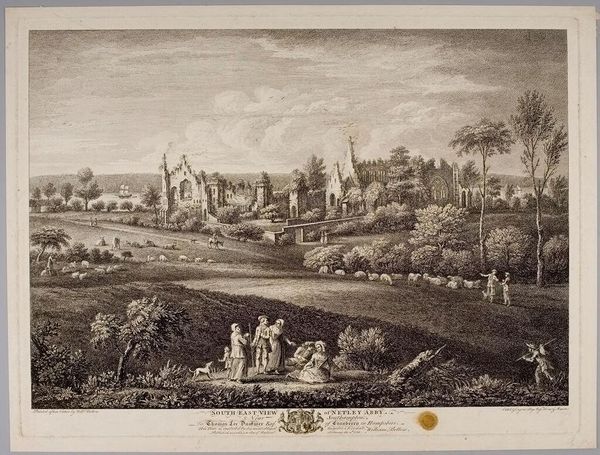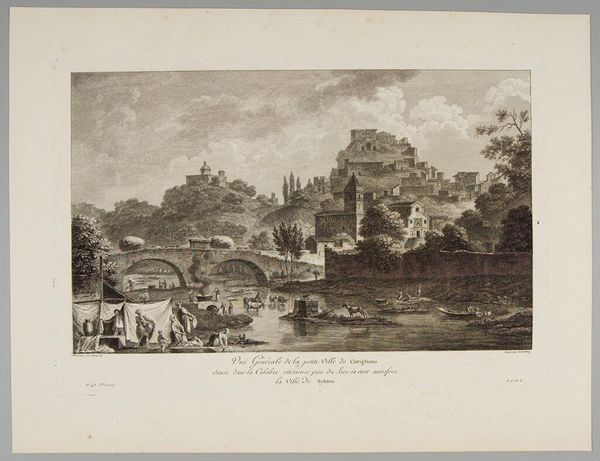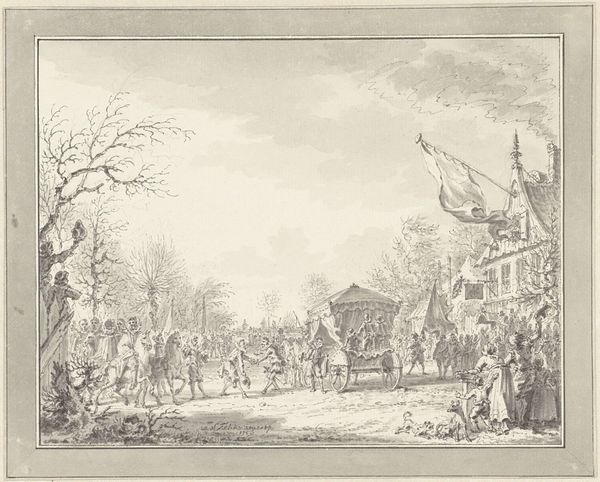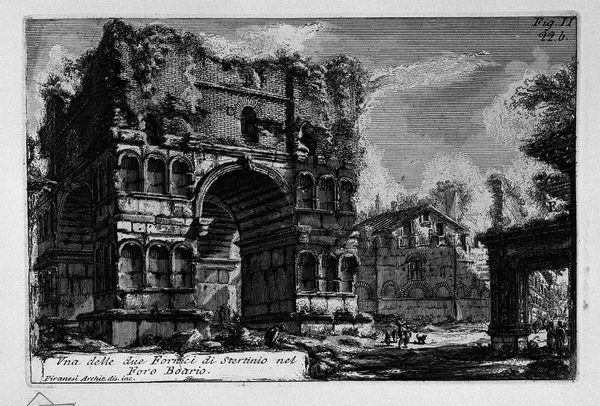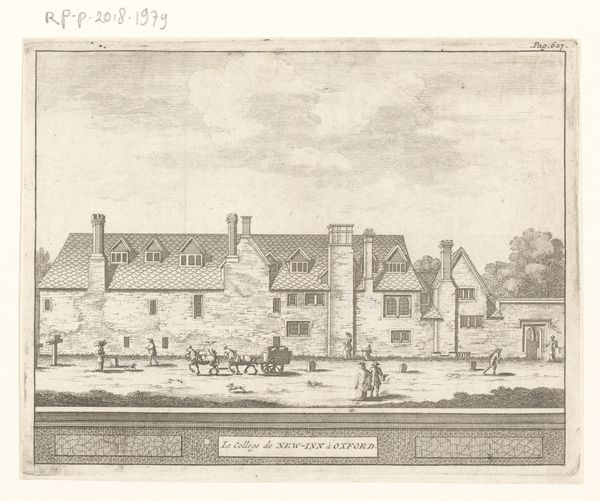
drawing, print, etching
#
drawing
#
baroque
# print
#
etching
#
landscape
#
winter
#
11_renaissance
#
child
#
men
#
genre-painting
Dimensions: Sheet (Trimmed): 10 11/16 × 14 1/8 in. (27.2 × 35.8 cm)
Copyright: Public Domain
Editor: This etching, titled "January" by Jan van de Velde II, dates to 1618. The frigid air and frozen pond teeming with figures on the ice really transport you to a different time! How do you interpret this scene? Curator: The scene pulses with the energy of shared experience against a stark winter landscape, reflecting humanity’s perpetual need for communion, even amidst hardship. Notice how the artist frames the composition, leading our eyes through a cultural landscape thick with memory. Editor: What do you mean by cultural landscape? Curator: Well, consider the figures: families, workers, aristocrats, all interwoven on the ice. How does this scene reflect larger social and perhaps spiritual structures present in the community during the Baroque period? Editor: It seems to show people from different social classes co-existing in shared leisure, but it's interesting to observe the separation between those using sledges versus those ice-skating. Curator: Exactly. Think about the ways that seasonal change affects shared and personal experience in cycles. Does this symbol inform your understanding of community memory or cultural legacy through art? Editor: The winter activities certainly depict communal resilience and resourcefulness. These seasonal activities act as symbols of life persevering amidst environmental constraints and hardship, reminding us of life's cyclical nature. Curator: Precisely, reflecting enduring symbols across diverse cultures, offering resilience, reflection, and communal memory through visual narratives. A powerful reminder! Editor: It’s amazing how much cultural history is embedded in a seemingly simple winter scene. I see the cyclical symbols of struggle and resilience in a completely different way now.
Comments
No comments
Be the first to comment and join the conversation on the ultimate creative platform.
